The lifestyle of the Amish people is largely dissimilar to our own as we rely heavily on advanced technologies and often face difficulties even with the most basic of tasks. Conversely, the Amish lead a simple and uncomplicated way of life, utilizing various innovative techniques which they have acquired and integrated into their daily routines over time. Their practices can be beneficial in a variety of areas such as housekeeping, gardening, and general survival, and are certainly worth considering incorporating into one’s own lifestyle.
Horse and Buggy for Transportation
The Amish people opt for “horse and buggy” as their primary mode of transportation, which follows a traditional method of travel. They utilize this transportation means for various purposes such as going to church, exploring the town, and traveling long distances with bulky luggage. The reason for their preference is that it is a straightforward, eco-friendly, time-efficient, and reasonably-priced option.

The majority of Amish families possess their own buggies, which have become an emblem of the Amish way of life. In contemporary times, a few Amish members make use of pony carts, open carriages and other means of transportation.
Natural Mothballs
Mothballs are commonly used in closets to safeguard woolen clothing and plant-based textiles from moths. Nonetheless, the mothballs that are available in stores contain significant amounts of pesticides and other dangerous substances, making them unsafe for human health.

The Amish opt for using natural components that provide similar benefits but without any negative consequences. They create tiny cotton balls that they saturate with a blend of cinnamon oil and clove oil. Over time, these cotton balls transform into effective mothballs.
Peanut Butter as Stain and Glue Remover
It’s true! The Amish frequently use peanut butter as a cleaning agent to get rid of stains and stickiness. To do so, just spread a generous amount of peanut butter onto the affected surface, and scrub gently with a brush.

Allow some time for it to solidify, then rinse it off and observe the outcome! The presence of innate oils in peanut butter provides an exceptional texture that simplifies the process of eliminating stains. Therefore, in case you have any leftover peanut butter, you are now aware of its alternate purpose.
Vinegar as Disinfectant
Vinegar is a highly effective disinfectant that can eliminate bacteria, dirt, and unpleasant smells from various hard surfaces. Additionally, it is generally considered to be safe for human health. The Amish community has been utilizing vinegar for a significant period and has also devised different approaches to enhance its efficacy.

Initially, warm a mixture of one cup of water and one cup of vinegar until it boils. Next, include some orange peels, cover the mixture, and let it steep for some time. Once done, switch off the heat and allow it to sit overnight. The next morning, transfer the mixture into a spray bottle, and your all-natural disinfectant is prepared for use!
Herbal Mosquito Repellent
The majority of mosquito repellents found on the market are potentially damaging to our wellbeing, prompting the Amish community to opt for natural ingredients in the fight against mosquitoes. They create a repellent by blending various natural elements including clove, catnip, lavender, peppermint, citronella, lemongrass, and spearmint.

To begin with, blend these various herbs in a bowl together with hot water, place a lid on the container, before allowing it to cool for some time. Next, filter the mixture, and the leftover liquid can be utilized as a mosquito deterrent.
Citrus Solution to Deodorize Rooms
The Amish have demonstrated that even basic techniques such as utilizing a citrus solution can be utilized creatively. Their strategy involves using it as a natural and affordable means of deodorizing rooms.
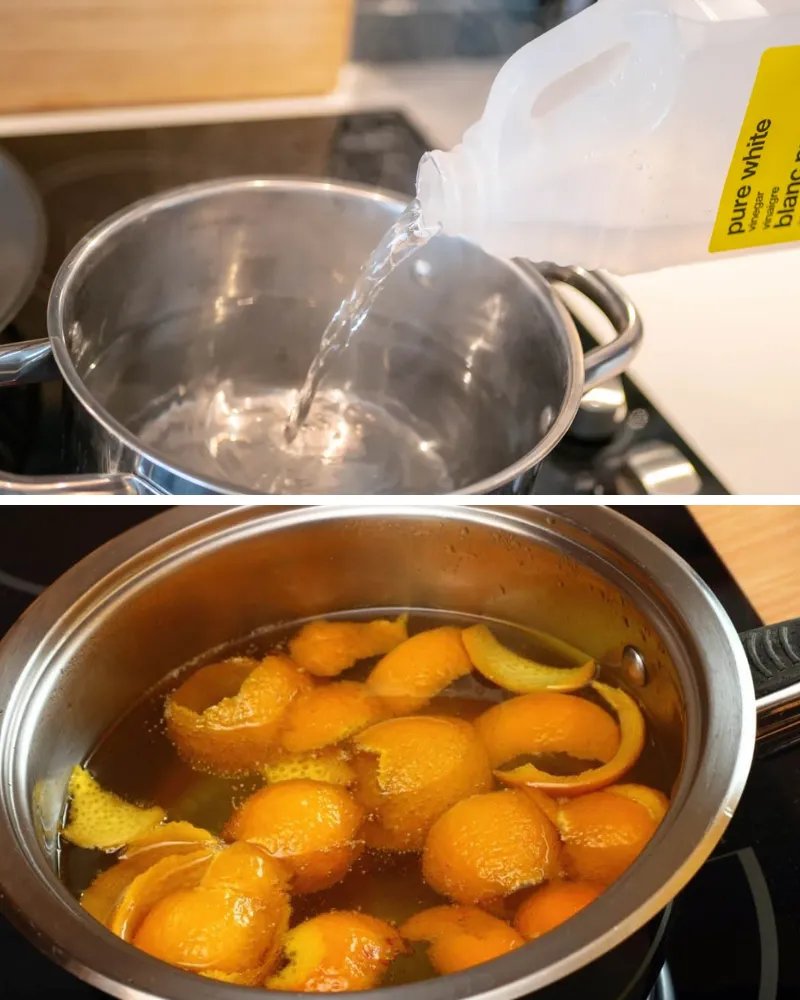
It is possible to use this at your residence as well. To do so, begin by boiling water and white vinegar in combination. Then, add some orange peels to the mixture and allow it to sit for a period of time. Afterward, transfer the concoction into a container and let it sit overnight. Once finished, you can employ this natural deodorizer as needed!
Natural Burn and Wound Ointment
The Amish community prefers to produce their own remedies for various everyday health issues rather than depending on contemporary drugs. Aloe vera is a key component of their natural treatment for burns and injuries. They also combine other natural ingredients like honey, lavender oil, tea tree oil, and coconut oil with aloe vera to improve its potency.

A mix of charcoals, alum, burdock leaves, honey, and cornmeal is being widely used as an effective ointment for treating burns and wounds, and has recently gained global popularity.
Salt and Vinegar to Unclog Drains
Salt and vinegar have been a traditional solution for unclogging drains for years, especially among the Amish who have shared its effectiveness with other communities. This mixture is powerful enough to break through stubborn clogs while keeping pipes safe from harm.

In order to do this at home, make a uniform solution by combining one cup of salt and one cup of white vinegar. Then, pour the solution into the drain, place a cover over it, and allow the blockages to soak for roughly thirty minutes. Afterward, use boiling water to flush out the drain.
Vinegar and Baking Soda Solution
The Amish utilize vinegar and baking soda for multiple functions in their daily lives. They even employ a mixture of these two substances as an eco-friendly cleaning solution and apply it to cleanse various household items, including cooking utensils, plates, sinks, laundry appliances, and other surfaces.
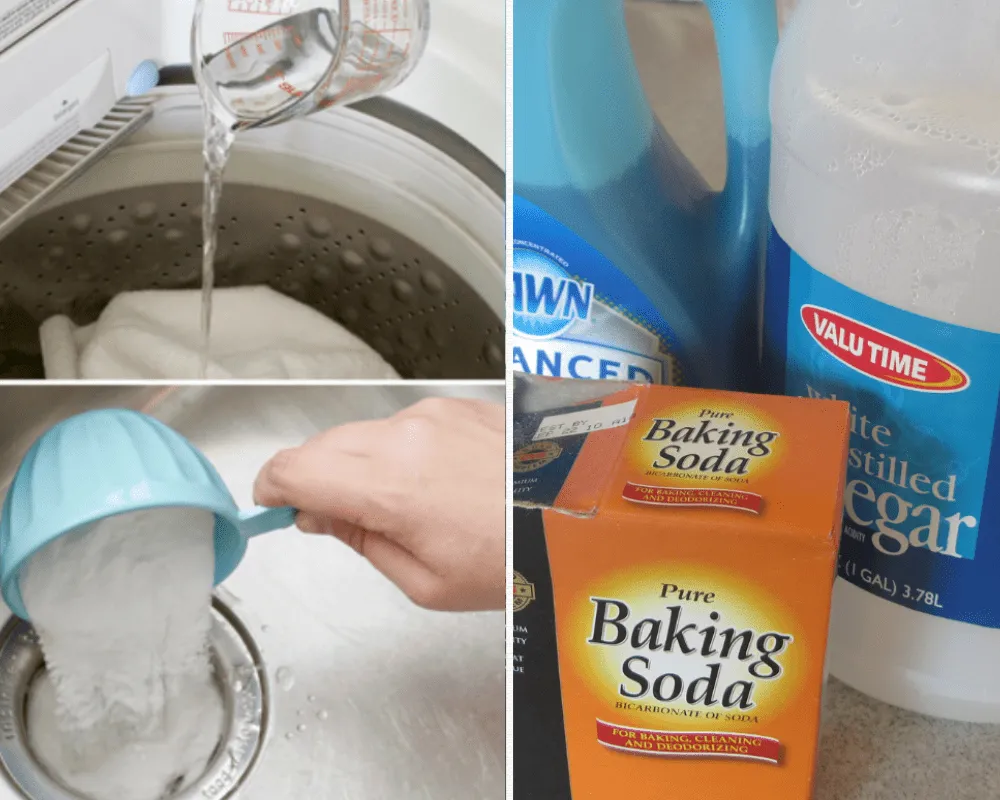
The mixture of vinegar and baking soda in equal amounts can serve various purposes, such as eliminating odors in enclosed areas, cleansing clothes, clearing blocked drains, revitalizing lackluster hair, and additional uses. It is essential to maintain a balanced proportion of vinegar and baking soda when preparing the solution.
Unclog Showerhead
It is important to regularly clean your bathroom showerhead in order to ensure proper functioning. The minerals present in the water may cause the holes through which the water passes to become blocked, leading to a clogged showerhead that does not function as well as it used to.
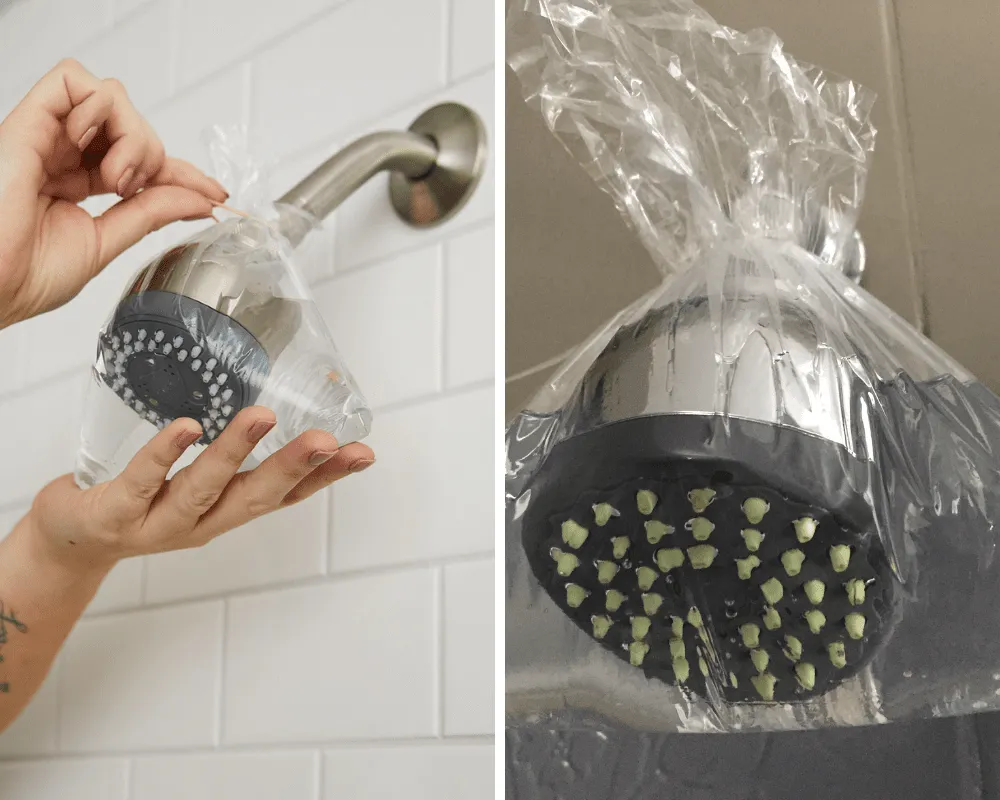
The Amish have a simple yet efficient technique for clearing blocked showerheads. You can take a plastic bag filled with white vinegar, wrap it securely around the showerhead, and leave it overnight. By the next morning, your showerhead should be free of any blockages.
Crochet Hook to Unclog Sink
When your sink is blocked, it can severely limit the flow of water, which is a significant problem. Typically, this happens because food particles become stuck in the pipe system located under the sink. Rather than calling a professional plumber to handle the issue, the next time you encounter this dilemma, consider using a straightforward Amish technique.

To clean the pipe, it’s important to hold the crochet hook correctly and use it to extract any accumulated materials. The hook can be held in a similar manner to how one would hold a knife when cutting vegetables.
Baking Soda to Revive Tarnished Silver
Over time, silver objects may lose their original shine and become tarnished. Nonetheless, instead of disposing of them, you can restore them to their former glory quickly using this effortless Amish technique.
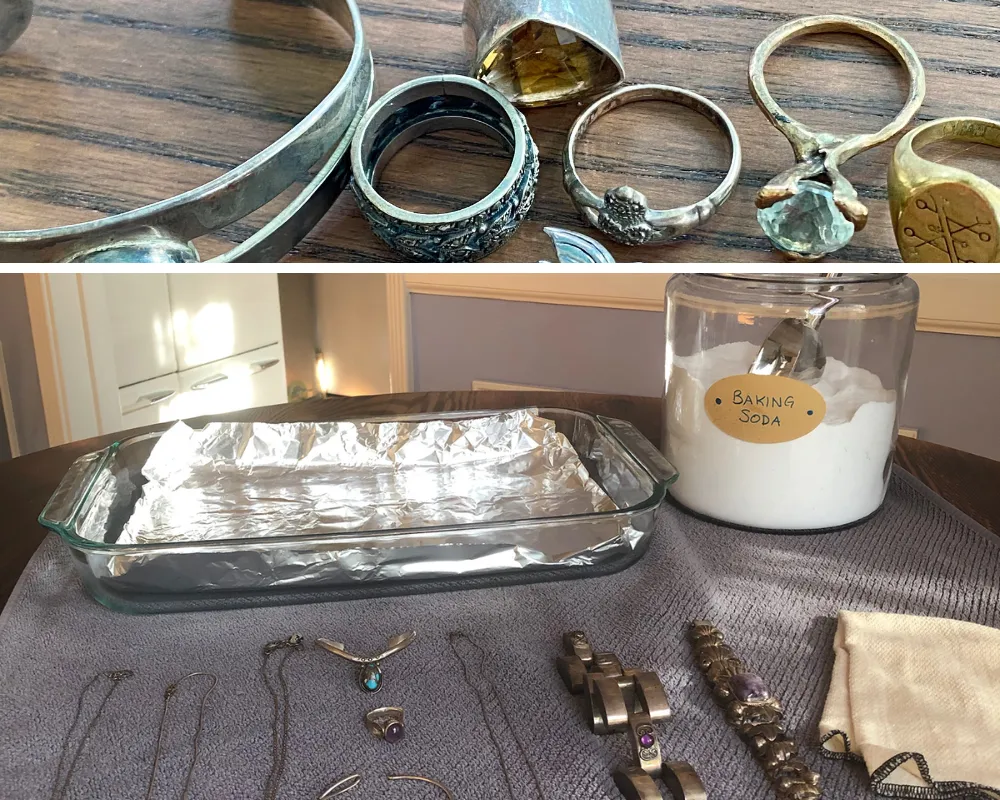
To begin with, gently wash your silverware using a mild soap that is not abrasive. After that, apply a mixture of warm water and baking soda to the areas that need attention, let it sit for approximately 15-20 minutes, and finally, use a damp cloth to wipe away the solution.
Milk to Polish Leather Accessories
Many people consider leather accessories as a great way to make a fashion statement. Nevertheless, one downside is that they tend to lose their luster as time passes, which means that they need regular polishing. Since many leather conditioners on the market are quite pricey, the Amish prefer doing their own homemade polishing, which is an affordable solution.
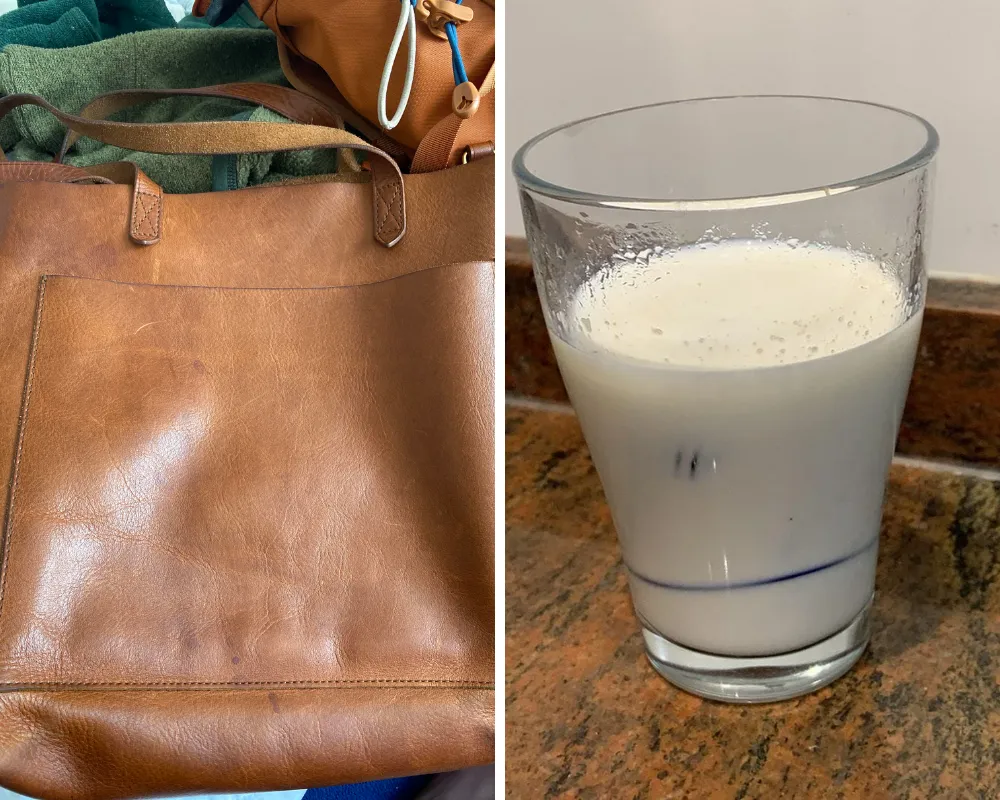
Using a microfiber cloth, gently apply raw milk to the leather and allow it to sit for a while. Be prepared to experience remarkable outcomes!
Organic Fertilizer
The Amish are renowned for their exceptional organic farming practices, which include producing their own natural fertilizers. To promote healthy soil, they mainly rely on animal manure as it has been scientifically proven to be the most effective option. Additionally, it is a more economical solution than buying fertilizers from conventional retailers.
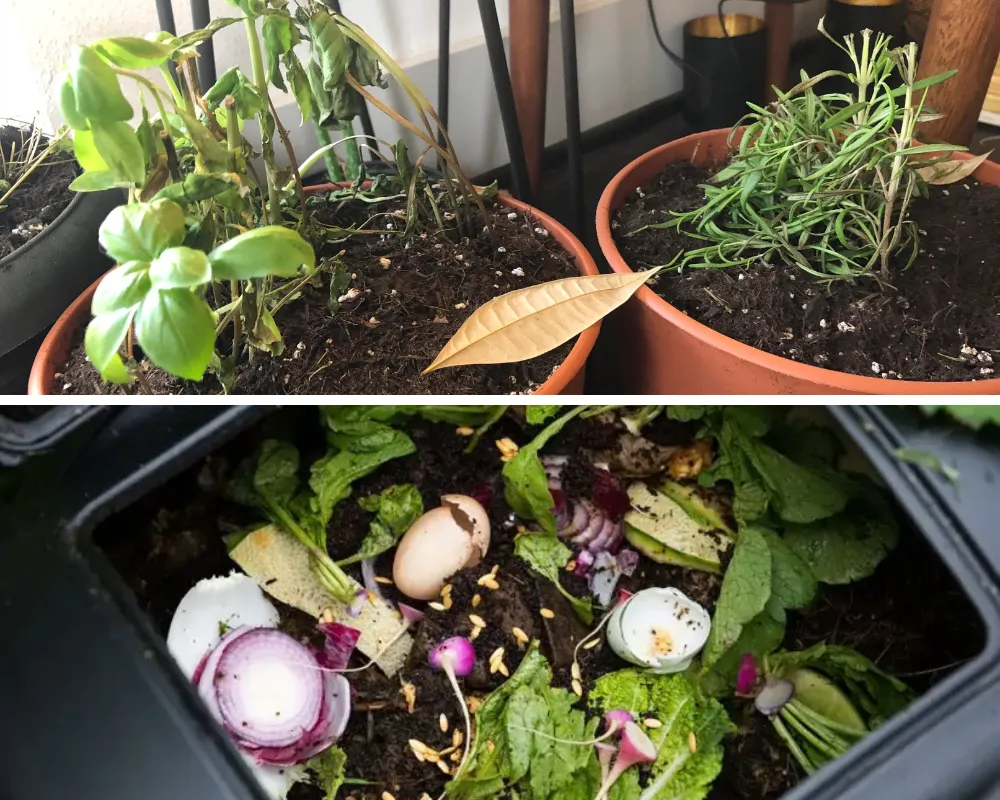
In addition to animal droppings, other materials like kelp, seaweed, and cottonseed meal are utilized. Additionally, moist scraps such as onion peels, potato skins, and tomato tops can be used as efficient fertilizers.
Borax Solution as an All-Purpose Cleaner
The Amish lifestyle involves utilizing a borax solution for cleaning purposes. This substance contains alkaline properties that effectively eliminate acidic stains and leave a surface with a lasting shiny appearance.
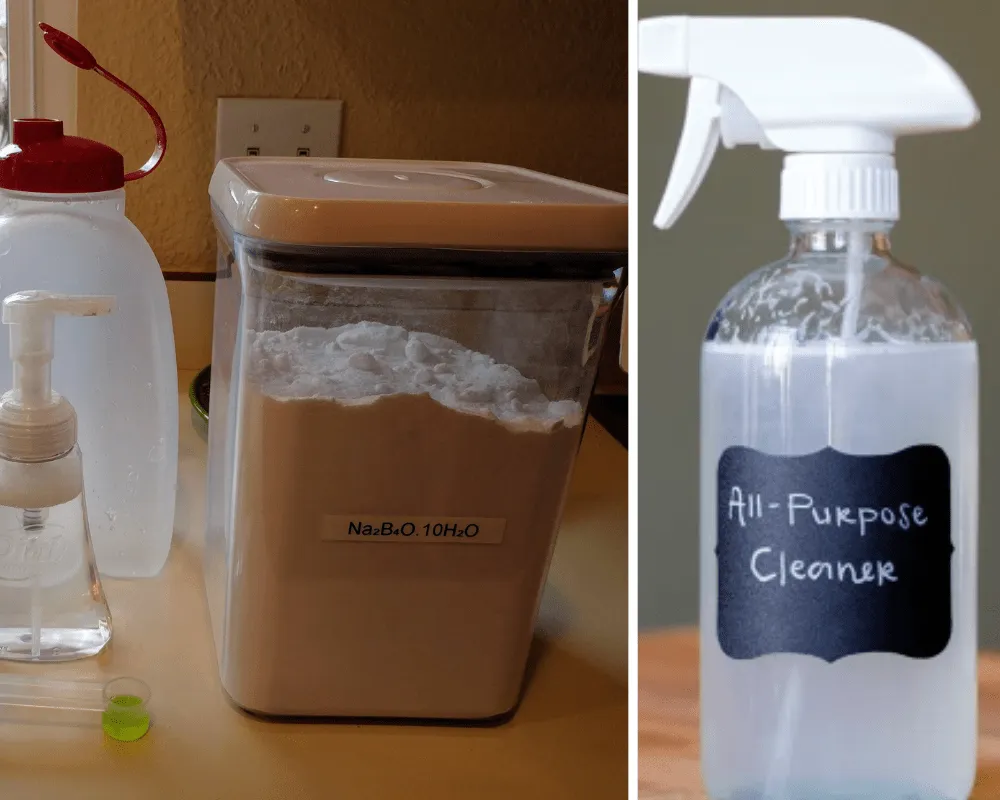
To create the remedy yourself, simply combine borax and boiled water in equal amounts within a stainless-steel vessel. Spread it onto the impacted areas and scrub using either a moist cloth or brush. For optimal outcomes, regularly utilize this solution.
DIY Method to Clean Rugs
If you feel like your rugs aren’t being thoroughly cleaned by vacuuming, take comfort in knowing that you’re not the only one. The Amish have created a useful do-it-yourself approach to tidying up those troublesome rugs, which you might consider attempting.

First, prepare a smooth mixture of baking soda, borax powder, cornstarch, and bay leaves. Now, pour the mixture onto the rugs and leave it for about three hours. Clean the top of the rugs when it gets completely dried.
Natural Water Purifier
The Amish people believe that rainwater is the safest option for drinking. They collect rainwater in a reservoir and then pour it into a natural purifier made out of an oak barrel.

There are many small stones at the bottom of the barrel, which are covered by layers of sand, charcoal, and big stones, respectively. As the water channels through the layers, it loses impurities, becoming suitable to drink.
Growing Your Own Food
The Amish follow the “grow your own food” concept very strictly. Most families in the Amish community hold a garden space on their home grounds, where they grow many different kinds of crops. This isn’t only cost-effective but also allows them to eat better quality fresh fruits and vegetables.
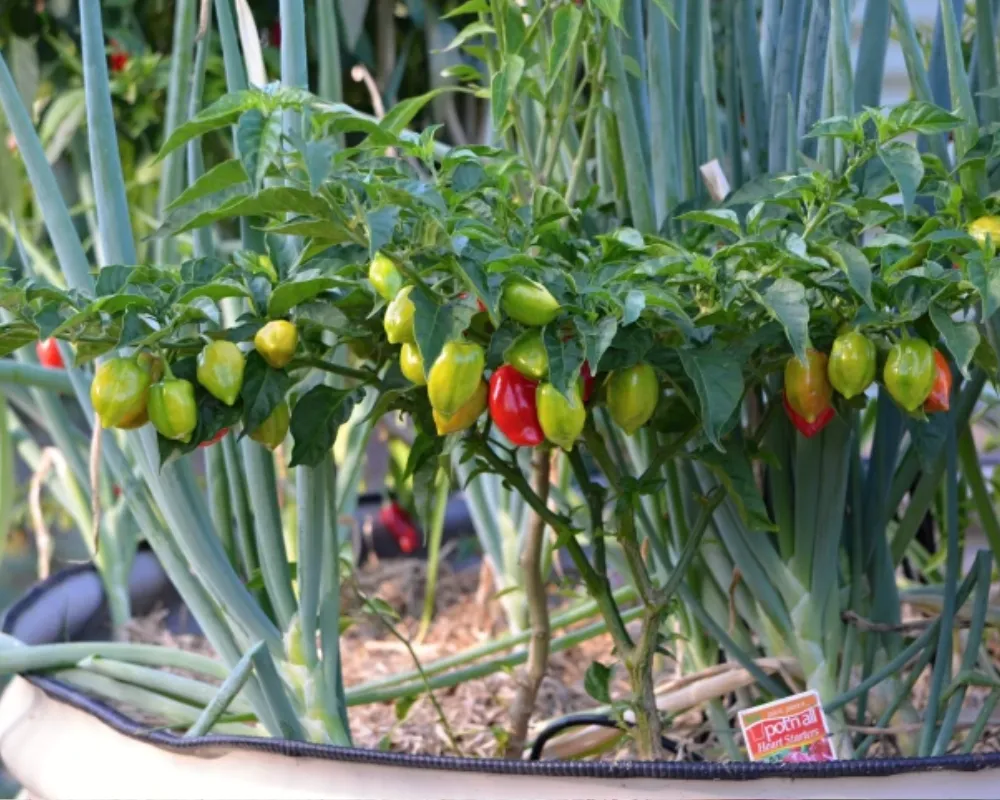
Moreover, they raise their own livestock as well. They make the most out of it and help each other in farming. A major reason why the Amish people are so healthy is definitely their good food habits.
Cooking Over Fire
Spending money on cooking gas isn’t the Amish way of living. They prefer to cook naturally over a fire, using iron wood-burning stoves. This not only saves a lot of money but also adds a delicious flavor to the dishes.

The Amish typically build the stove in the center of the house, so that it provides a sufficient amount of heat to all corners of the home. During harsh winters, Amish families often spend the evenings gathered around the burning stove.
Food Preservation Methods
Preserving food for later seasons is a common practice in the Amish community. They ditch the modern ways and stick to traditional methods of keeping their food fresh. For instance, they store food in an ice house (made out of wood) to keep it cold during summer.

Likewise, instead of using a pressure cooker, they boil canned food naturally for more than three hours to preserve it. Also, when it comes to food like sauerkraut, they ferment it for about ten days at room temperature.
DIY Cold Remedies
As mentioned before, the Amish rarely use modern medicines for common issues, and, instead, go for natural ingredients to fight ailments. They use something as simple as lukewarm salt water to treat problems like a cold or a sore throat. For the remedy, all you need to do is dissolve one teaspoon of salt in eight ounces of lukewarm water and use it to gargle three times daily without fail.

Similarly, some Amish people also use ginger root dissolved in boiled water for a sore throat. Garlic, honey, echinacea, soup, etc., are also commonly used in the Amish communities to treat minor issues.
Dandelion Juice for Health
Dandelion has long been recognized for its medicinal properties. In Amish health care, dandelion juice is primarily used to remove toxic substances from the blood. Packed with vitamins and minerals, it effectively purifies your blood, making you healthy from the inside.

It apparently promotes the formation of red blood cells, helping in reducing the risk of anemia. It also improves skin health, aids in immune functions, boosts liver functions, fights inflammation, regulates cholesterol levels, promotes weight loss, and more. Drink it every morning on an empty stomach to see good results.
Orange Peels to Polish Wood Surfaces
Instead of throwing them away, the Amish use orange peels in numerous innovative ways. For instance, they use those peels to clean and polish wood surfaces.

Orange peels contain D-limonene, which is highly effective at polishing greasy and dull-looking wood surfaces. Also, it provides a protective layer on the wood’s top, helping to prevent the build-up of dust. Simply rub the white side of the peels over the wood, and it will do the job within a few minutes.
DIY Method to Remove Mildew
For mildew, there are lots of toxic cleaners available in the market. As you surely don’t want to remove mildew at the cost of your health, try using this simple DIY Amish method to conquer mildew.
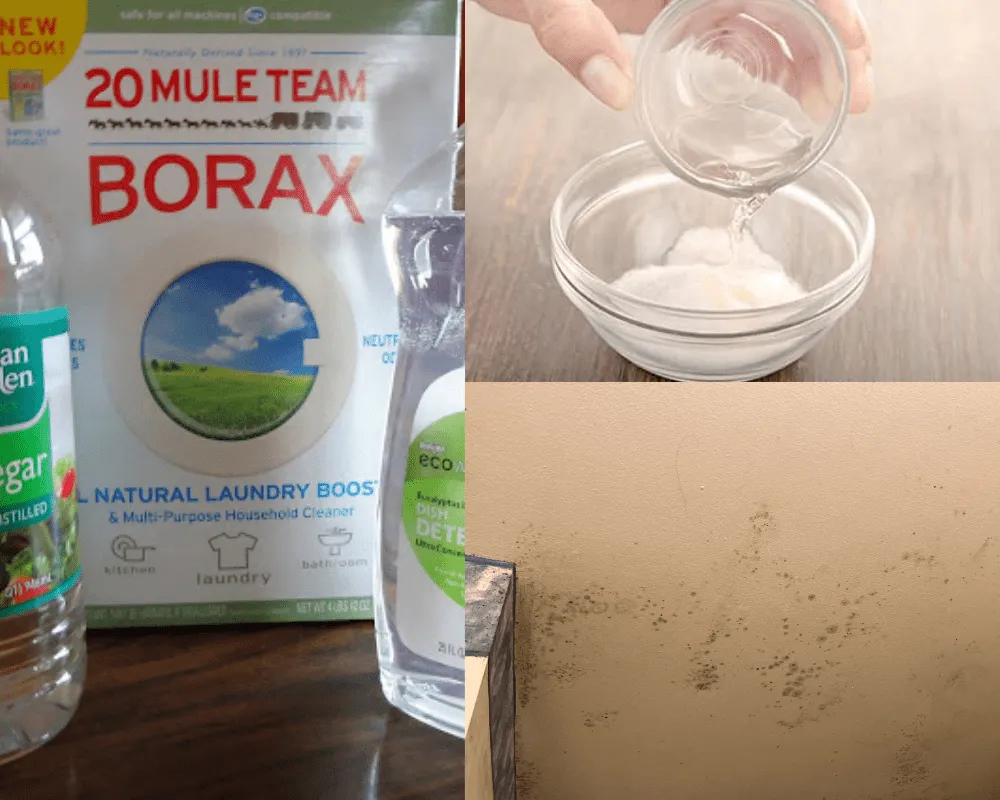
Mix half a cup of borax powder with three-four cups of lukewarm water and a small amount of thyme essential oil. Then, apply the mixture to the affected areas of the surface and use a brush to get rid of those spots.
Natural Pesticides
The Amish love organic gardening, and, therefore, avoid using chemical pesticides on plants. They use a simple solution of boiled water and brown sugar, which is effective for killing pests without causing harm to the plants.
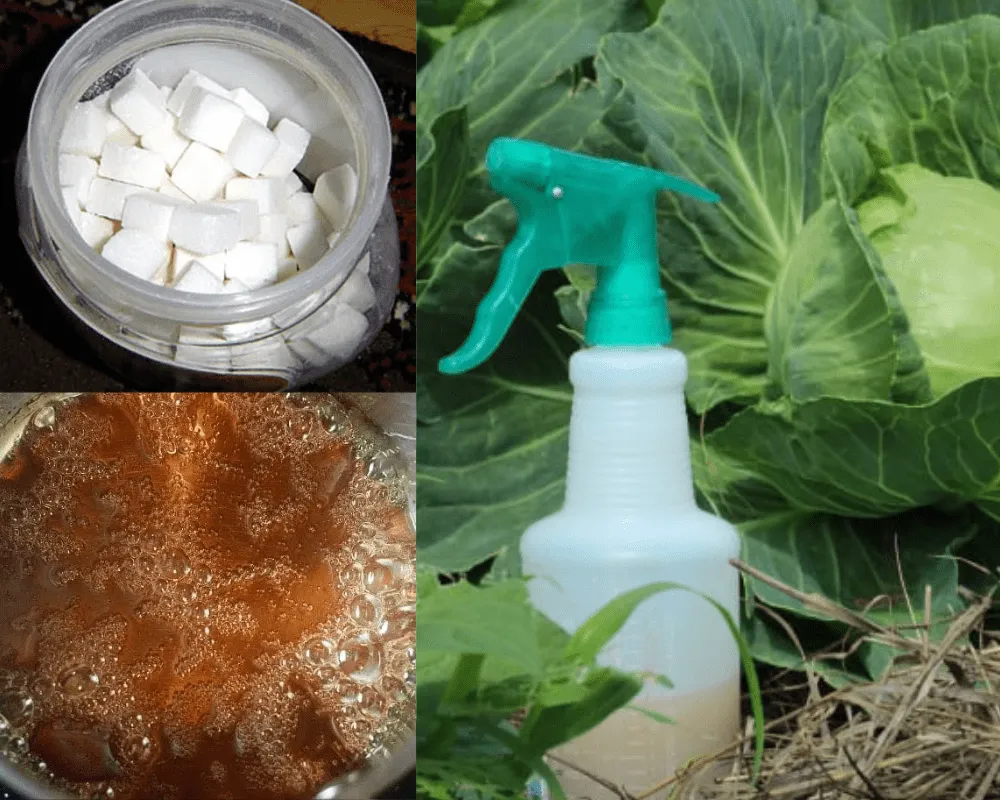
Some Amish communities also use salt spray at the base of plants. This not only gets rid of pests but also boosts the absorption of nutrients in plants. Eucalyptus oil is also an excellent pesticide; however, it needs to be used almost daily for good results.
Natural Insecticides
It’s a real pain seeing those cockroaches and ants scuttling across the kitchen floor. They spread diseases and also make the floors dirty. However, using store-bought chemicals to get rid of these insects could eventually be hazardous to your health.
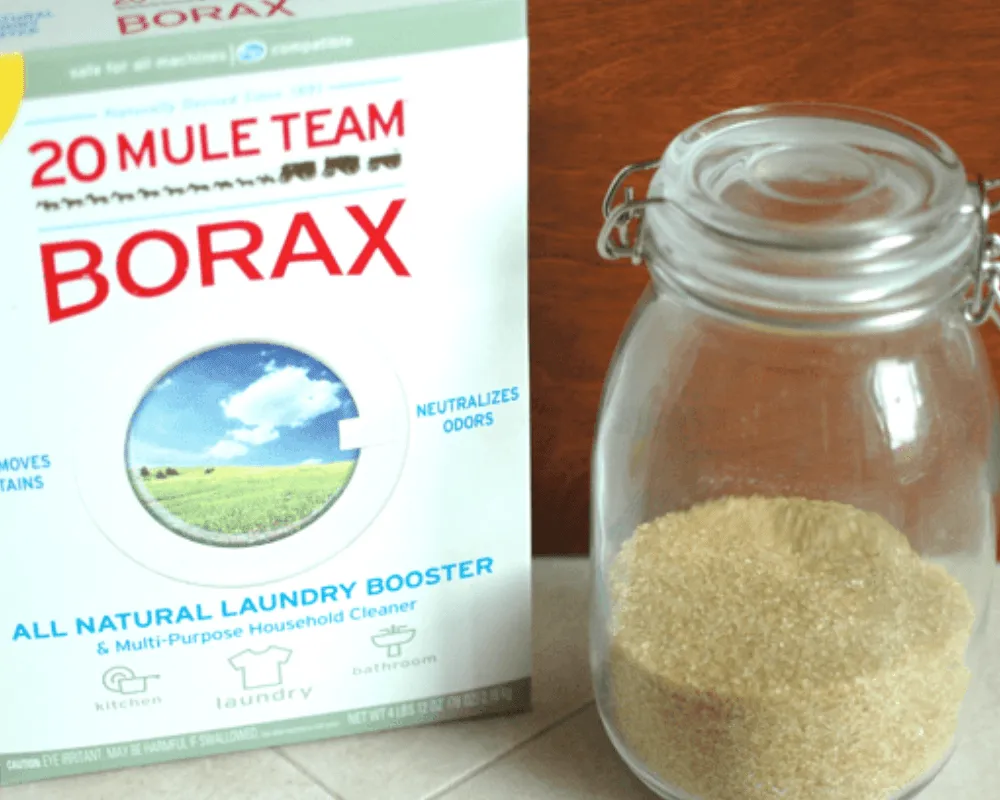
Thankfully, you can simply use an Amish recipe to make DIY insecticide. All you need to do is mix equal amounts of borax and white sugar and then sprinkle it across all infested areas of your house. Your bug problems should be gone in no time.
DIY Skin Remedies
Amish women are well-known for their glowing and flawless skin. The secret to their unmatched beauty lies in their homemade skin remedies, a major one being apple cider vinegar. Loaded with vitamins, minerals, and enzymes — apple cider vinegar helps reduce pimples, soothe skin, heal sunburns, and restore natural tone. The remedy can typically be used three to four times a week.

Besides apple cider vinegar, they also apply a citrus solution on their skin to remove dark spots, scars, pigmentation, etc. Aloe vera gel is another commonly used skin care remedy popular in the Amish community. The list also includes cherry paste, charcoal, coconut oil, and more.
DIY Remedies for Sore Muscles
Muscle soreness is a very common issue all around the globe, especially among those who often engage in vigorous exercises. Luckily, the Amish have found several remedies to fix this. So, next time you deal with a sore muscle, use any of the following remedies.

Apple cider vinegar works like a charm to fix sore muscles. It can be either applied to the affected areas or consumed on an empty stomach regularly. Besides, topical application of essential oils (such as thyme, lemongrass, or peppermint) is another great solution for the problem. The list includes Epsom salt, watermelon juice, cherry juice, etc. as well.
Removing Grease Stains
Seeing grease stains on your clothes isn’t uncommon nowadays. However, using detergents to remove those stains is a bad idea as it could eventually fade the clothes’ color and make them dull. The Amish have developed a DIY solution for this problem as well, which is definitely worth a try.

First, heat two cups of plain water with one teaspoon of salt. When the mixture comes to a boil, cover it properly and let it cool for a while. Now, scrub the stained areas of your clothes with this mixture. You can also add vinegar, baking soda, or cornstarch for even better results.
Preventing Bed Sheet Pilling
Pilling refers to those tiny fuzz balls on your sheets due to the breakage of cotton fibers. Many bed sheets develop this issue after they’ve been used for a certain time. This is undoubtedly a very annoying problem and can cause itchiness and irritation on your skin.

In the Amish way of living, there are some easy methods to prevent this. Firstly, go gentle when washing your bed sheets. Also, avoid using harsh detergents, and go for mild ones instead.
Drying Clothes Without a Dryer
Most Amish people wash their clothes on a fixed day, usually Monday, with their hands or in a washing machine (powered with a diesel generator or a pneumatic motor). However, when it comes to drying those clothes, they don’t prefer modern-day drying machines, and, instead, go for the traditional method of sun drying.
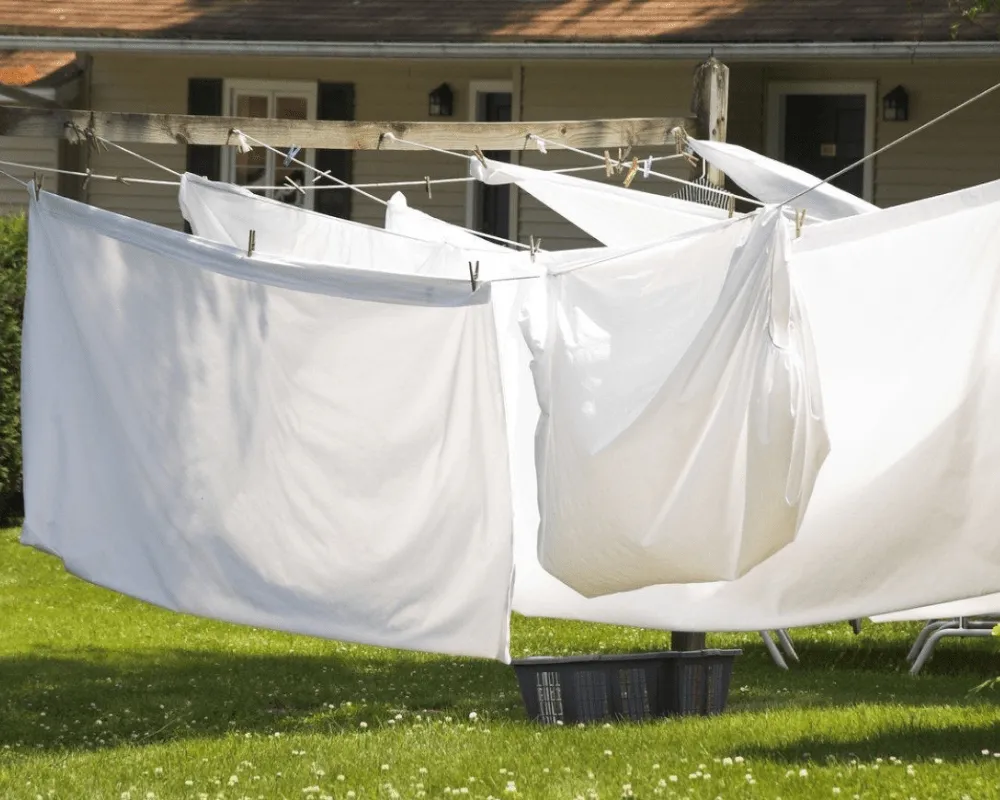
They simply hang clothes on clotheslines out in the yards. During rainy days, they hang small batches of clothes underneath their roofs, or sometimes near the wood stove.
Natural Stovetop Cleaner
The most popular stovetop cleaner in the Amish community is a mixture of vinegar and baking soda. They also use a solution of table salt, baking soda, and warm water to clean their stovetops. You can also add some lemon juice to the mix to see more effective results.
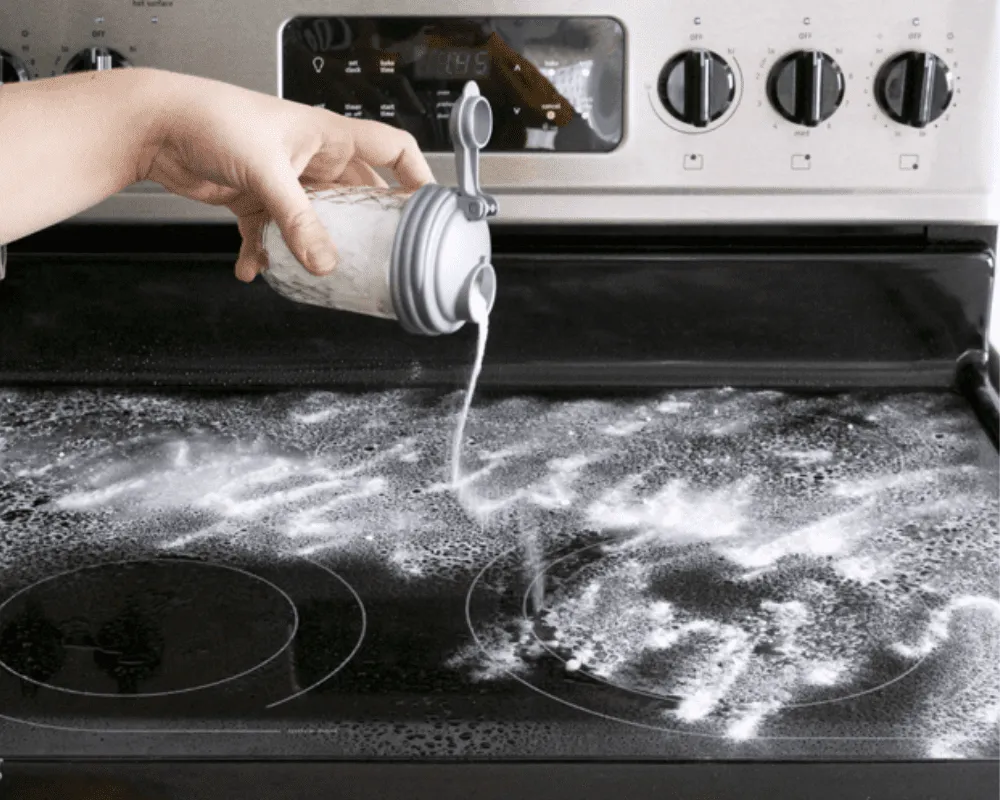
For any of these remedies, all you need to do is apply the mixture on the stovetop and then scrub gently. It’ll only take a few minutes to clean the area.
Keeping Cookies Fresh
As mentioned, the Amish have some innovative ways of preserving food. So, when it comes to keeping cookies fresh longer, they have another great hack. Amish families keep cookies in an airtight container with a little piece of bread. This keeps the crunchiness of the cookies intact for a longer period.

When trying this trick, make sure that the cookies are completely cool before you store them. Also, store different varieties of cookies separately or in layers. Moreover, if possible, try to store them without frosting.
Pineapple Juice for Cough Relief
Pineapple juice is widely used in the Amish community to relieve cough symptoms. It has a group of enzymes called bromelain, which contains anti-inflammatory properties, making it effective against mucus. Additionally, it contains fiber, vitamin C, beta carotene, zinc, copper, folate, manganese, and more, all of which are cough-preventing agents.

For the best result, mix one cup of pineapple juice with one teaspoon of honey, a pinch of salt, and a pinch of pepper. Drink the mixture three to four times a day for a few days.
Garlic to Relieve Digestive Issues
Garlic is one of the most commonly found herbs (although it’s botanically a vegetable) in Amish kitchens. Besides adding it to various dishes to boost flavors, the Amish also use it as a remedy to treat and prevent digestive issues.

Rich in antibiotic properties, garlic flushes out toxins from your digestive system. This, in the long run, helps keep digestive issues at bay. For the best result, chew a clove of garlic on an empty stomach every morning. Besides digestion, it will also help regulate blood pressure, boost the immune system, and fight against heart diseases.
Strategic Garden Planting
The Amish take a strategic approach when it comes to garden planting. They’re very specific about which plants they want to grow and plan accordingly. They grow vegetable crops vertically, as this makes it easier for the plants to get air circulation.

Amish grow certain plants (like marigolds) next to vegetable crops. This is due to the fact that marigolds reduce the risk of pests. They implement the “companion planting” method and design the space of the garden beforehand.
Purchasing Goods in Bulk
Even though the Amish grow their own food, they need to visit stores to buy certain items. However, they follow a simple strategy that turns out to be very cost-effective.

They purchase goods in bulk for the entire community at once and later distribute the goods accordingly. This makes the rate a lot lower than the actual price. Notably, the Amish rarely spend money on frivolous goods.
Vinegar in Cherry Desserts
The Amish way of cooking is interesting in many ways. They add a splash of balsamic vinegar to all kinds of cherry desserts, including pie. While it may sound a bit odd to many, this enhances the taste enormously.

According to “The Amish Cook” columnist Elizabeth Coblentz, vinegar’s acidic nature helps make cherry desserts a bit tart. This is similar to using lemon juice in many other types of desserts.
Aloe Vera for the Eyes
If you visit an Amish community, you will notice that, except for a few members, no one is wearing specs there. The reason is simple: they go natural when it comes to taking care of their eyes.
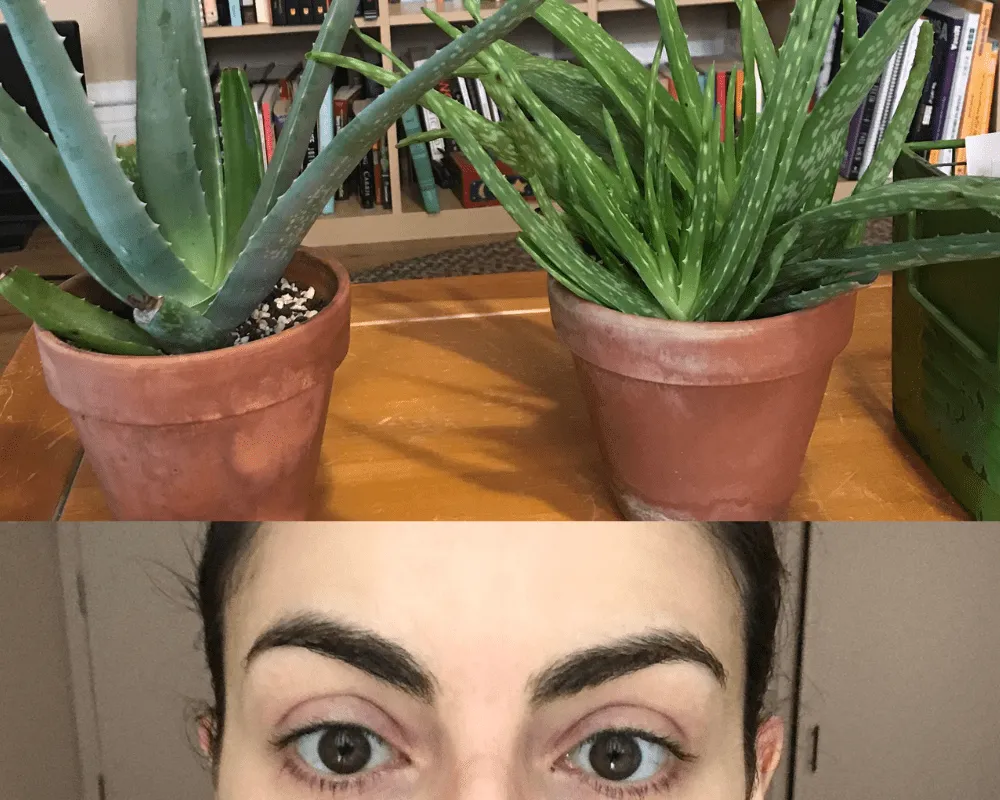
Most Amish people apply aloe vera gel around their eyes. This helps to hydrate the skin around the eyes, keeping your eyes relaxed for a long time. Also, it reduces swelling, which in the long run, helps keep your eyesight strong. You can either use the natural gel from the plant or buy the gel.
Using Butter When Baking Bread
The Amish make a very delicious bread, which is known as “friendship bread” all across the world. Among all the factors that make their bread unique, the use of butter is certainly a major one!
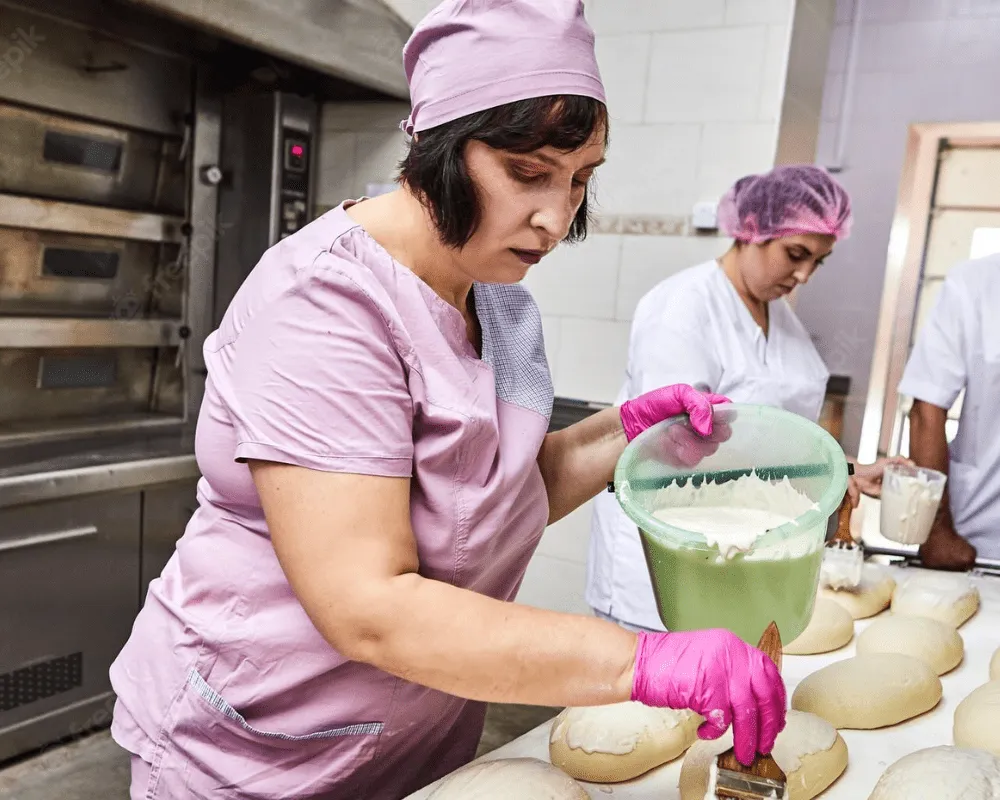
They brush some melted butter all over the top of the bread before putting it into the oven for baking. This makes the bread soft, crunchy, and golden in appearance. It’s recommended to use herb butter instead of normal butter for a better taste.
Softening Brown Sugar
Brown sugar adds a boost of flavor to baked dishes. But a major challenge of using brown sugar is that it gets dried and rock-hard quickly. However, the Amish have developed an easy method to soften it again.

First, put the sugar in a container and place a small piece of apple or bread at the top. Now, seal the container and leave it at room temperature overnight. This restores moisture in brown sugar, making it soft and ready to use! You can also use an oven or a piece of terracotta to make it go quicker.
Olive Oil as Floor Cleaner
The Amish people prefer using natural ingredients for cleaning, ditching all chemicals available on the market. One such ingredient is olive oil, which the Amish often use to clean floors.

As surprising as it may sound, olive oil works as a great floor cleaner. It removes dirt and other impurities with ease, leaving the floor shiny. For even better results, you can add some lemon juice and vinegar to the oil, and apply the mixture to the floor with a cotton pad.
Waste Nothing
“Waste nothing and fix everything” — this is a principle that most Amish people live by in their day-to-day lifestyle. They preserve leftover food and take all necessary measures to follow an eco-friendly lifestyle.

Also, they don’t throw peels of vegetables and fruits in the dustbin. For example, they use lemon pulp to clean shower doors. Banana peels are used to polish shoes or to help grow household plants. And, apple peels are used in various dessert recipes.
Natural Soap
The Amish people have crafted numerous recipes for natural soap, some of which have recently gained enormous popularity across the world. Free from harmful ingredients, these soaps have no side effects on your skin. So, if you want to give your skin a superb glow naturally, try these.

You can make a bar of soap using lavender buds, patchouli, and lavender essential oil. Additionally, you can add some poppy seeds as well because they effectively remove dead skin cells while also improving blood circulation. Finally, add a few drops of lemongrass or eucalyptus oil for a pleasant fragrance.
DIY Hair Remedies
In the Amish way of hair care, one should always go as simple as possible and ditch all kinds of chemical treatments. They mostly use natural remedies for hair, which are very effective in the long run.

For instance, they use a simple solution of ginger paste and carrier oil for scalp treatment. First, combine two teaspoons of ginger paste with four teaspoons of carrier oil, massage the mixture into your scalp for about five minutes, leave it for thirty minutes, and wash it off with a mild shampoo. Do it twice a week for better results.



